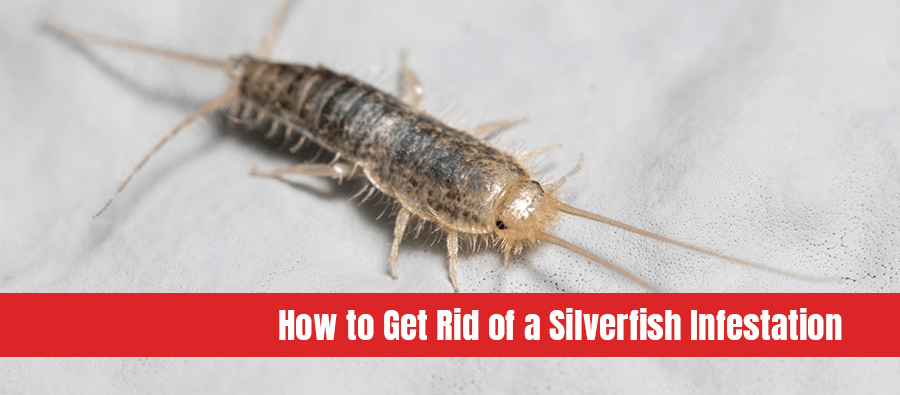People who are thinking of using ultrasonic mouse repellers may wonder if it will affect their cats, dogs, and other pets. These electronic devices are designed to repel rodents by emitting high-pitched noises that such pests would find disagreeable. However, most pets can also hear sounds that are too high for human ears and they may be impacted by these ultrasonic repellents as much as the unwanted rodents.
So, do ultrasonic mouse repellers affect cats, dogs, and other pets? In general, ultrasonic mouse repellers don’t drastically affect cats and dogs; however, they do negatively affect other domesticated animals such as rabbits, hamsters, and certain reptiles.
Pet owners should, therefore, be informed about the effects of these repellents before making the decision to use them for pest control, depending on the types of pets in the home and their dispositions.
People turn to electronic devices for pest control thinking they are more environmentally friendly and safer (being non-toxic) for pets and children in the home. Unfortunately, there has been little data to back up the effectiveness of these devices. Additionally, many pet owners are unaware of the potential effects of these repellants on other animals in the home. This ultrasonic pest solution, therefore, may result in more harm than good.
want to Skip All the Research? Then Hire a Decent Exterminator In your Area!
Check out our exterminator search tool where you will receive free quotes from thoroughly vetted exterminators in your local area!
How Ultrasonic Mouse Repellers Work
Most electronic pest repellents create high-pitched sounds (ultrasounds) that are intended to repel rodents and insects. They differ in the frequency of ultrasonic sound ranges and the volumes at which they project the sounds.
Generally, “ultrasound” indicates sounds at frequencies above 20 kilohertz. Humans are not capable of hearing such high frequencies, although the sounds are audible to many animals—most of which can hear frequencies above 45 kilohertz.
The logic behind an ultrasonic mouse repeller is that the device would produce a sound audible to rodents but not humans, due to the high frequency. This sound would ideally disturb rodents and drive them from the home yet be inaudible and harmless to humans.
However, the repelling factor of such a device is not simply based on the frequency it produces but the volume of the sound as well. The frequency of electronic pest repellents doesn’t bother common family pets such as cats and dogs for the most part, but the volume can be disarming. In addition, families that have pets such as rabbits and hamsters should understand the negative effects these repellants can have.
Why People Use Ultrasonic Mouse Repellers
People typically use ultrasonic mouse and pest repellers for the following reasons:
- They believe it’s an effective form of rodent/pest control by keeping them away from the home
- They believe that it’s more environmentally friendly than other forms of repellant such as toxic sprays or chemical poisons
- They believe such repellents are more humane than traps when it comes to rodents
- They believe it’s a healthier form of pest control for homes with pets or children, as there is no exposure to toxins or chemicals
The intentions are responsible and humane on the part of those who use these electronic repellents as pest control. However, humans may be unaware of the effects that these devices have on other animals in the home because they can’t detect either the frequency or volume of the sound.
Since humans are unable to hear sounds at that frequency, they would not be aware of the volume of such sounds. In order for the electronic repellents to work, however, the sounds must be projected at a certain volume so that the rodents within range can hear them and be discouraged from approaching. Therefore, it’s primarily the volume rather than the frequency of these devices that affect pets in the home.
How Ultrasonic Repellents Affect Dogs
The majority of manufacturers that produce ultrasonic mouse repellers claim that such devices do not harm dogs. This is true in the sense that high frequencies alone don’t cause discomfort to dogs, even though they can hear them. In fact, ultrasonic devices, such as dog whistles, are often used in training and communication with dogs.
Since ultrasonic mouse repellers would not be associated with a dog’s training or communication with its human, canine pets in the home would most likely ignore the high-pitched sounds. Dogs are exposed to ultrasonic sounds nearly every day, but they generally don’t react to them unless they are associated with a human’s communication or training methods.
Though the frequencies of ultrasonic repellent devices may not affect dogs in the home, the volume certainly can—especially for a dog with a nervous disposition. Users of such repellents report that dogs generally have three possible reactions when the device is introduced:
- Moving away from the source of the sound (anxious behavior)
- Curious behavior regarding the device (head tilting, sniffing)
- Indifference to the sound and/or device (minimal or no reaction)
These reactions don’t indicate serious harm or discomfort on the part of canine pets, but there is the potential for ultrasonic repellents to cause some stress and irritation for dogs living in homes where they are used. Pet owners should consult their veterinarian before using such repellents and especially observe dogs for any signs of distress, as each dog can react differently.
Dogs utilize body language to show their comfort level. Signs of distress include:
- Turning and running in the opposite direction
- Backing away
- Tail tucking
- Whining and/or barking
In addition, these devices should not be used in rooms where dogs spend their time—particularly eating and sleeping. If pet owners notice their dogs are reacting apprehensively with increased stress, they should discontinue using the ultrasonic mouse repeller immediately.
How Ultrasonic Repellents Affect Cats
Manufacturers of ultrasonic mouse repellers claim that such devices do not harm cats just as they don’t harm dogs. Cats can actually hear more sounds at a higher pitch than most dogs, in the frequency range of 55 to nearly 80 kilohertz.
Unlike their canine counterparts, felines don’t use their ultrasonic hearing abilities for communication with humans. However, they most likely utilize this keen hearing for hunting since many rodent species make ultrasonic calls.
Cats are extremely sensitive to changes in the home, which can cause them distress. In addition, cats are averse to loud noises which can also result in feelings of anxiety and irritation. Therefore, the presence of a high-pitched ultrasonic frequency would not necessarily impact cats on its own—but the sudden and persistent volume of the noise could certainly affect a pet cat in a negative way.
By nature, it can be more difficult to determine how something affects a cat compared to a dog. Like dogs, cats use body language to communicate. However, their reactions can be much less overt and clear. Signs of distress in cats include:
- Eliminating outside their litter box
- Inappropriate or incessant scratching
- Diarrhea
- Hiding
- Clinginess
- Decreased appetite
- Excessive grooming
Many of these distress signs in cats are also indications of medical issues. Therefore, before assuming that deactivating the ultrasonic repellent will solve the problem, cat owners should report the behaviors and consult their veterinarian for medical advice.
How Ultrasonic Repellents Affect Rabbits
Ultrasonic mouse repellers have a negative impact on rabbits, particularly those that are kept as pets in the home. Rabbits are prey animals and therefore are naturally cautious and on high alert, even when domesticated. Their senses are easily stimulated which makes them more prone to fear and alarm than other animals. This also makes them highly susceptible to experiencing stress.
Some clear signs of stress in rabbits are:
- Excessive nervousness and jumpiness
- Restlessness
- Aggressive or difficult behavior
- Lethargy
- Lack of interest in food
- Rapid breathing and/or panting
- Extreme agitation, grunting or screeching
- Bulging or fearful eyes
- Ears laid back against their head
- Thumping/stomping the ground
- Hair pulling resulting in bald patches and/or thinning coat
- Repetitive behaviors such as circling, biting, bobbing
Though rabbits tend to be anxious animals by nature, they are easily stressed by changes in their environment. Sudden changes, in particular, can trigger their stress response. Therefore, those who have pet rabbits need to be especially aware of their well-being. Rabbits take comfort in routine and habit and become dependent on predictability in their surroundings. Any changes should be introduced gradually.
In addition, rabbits have very sensitive hearing and are perpetually alert to sounds around them. As such, loud noises cause them great distress. Again, when it comes to ultrasonic mouse repellers, the volume puts rabbits at more risk for anxiety than the frequency of the sounds.
Though manufacturers of ultrasonic repellents discourage consumers from using them if they have rabbits in the home, some make stipulations that the devices can be used in rooms where pet rabbits don’t spend time. This is misleading, considering the sudden change of sound that the device would introduce to the home and its potential volume to sensitive rabbit ears.
Therefore, due to the sudden environmental change and potential volume of ultrasonic pest control devices, rabbit owners should avoid their use altogether.
Ultrasonic Repellent Effects on Other Domesticated Animals
Cats, dogs, and rabbits are some of the most common household pets. However, many households incorporate other domesticated animals as pets. These include various species of amphibians, reptiles, fish, birds, and even rodents. These pet owners should also be aware of the potential effects of ultrasonic repellents on animals in the home.
Rodent Pets
Hamsters, guinea pigs, gerbils, and chinchillas are all potential family pets and all members of the rodent family. Since ultrasonic mouse repellers are designed to repel rodents, these devices should not be used in homes where rodents reside as pets. The noises produced can be intolerable and stressful for such animals in the home.
Manufacturers of this pest control method acknowledge these conditions and discourage consumers from using them in such circumstances.
Amphibian Pets
Frogs are also capable of hearing ultrasounds, and some even use them for communication. There has been very little research as to whether exposure to ultrasonic pest control devices has a negative effect on amphibians. Therefore, it’s better for those who have amphibian pets such as frogs to carefully consider using such repellers.
Reptile Pets
Many families decide to keep reptiles such as snakes and lizards for pets. Snakes “hear” more or less through vibrations, so they would not be affected by ultrasonic frequencies regardless of volume. Lizards can hear better than snakes, and they can be affected by ultrasonic mouse repellers. In fact, some ultrasonic pest control devices are marketed for ridding homes of lizards and geckos.
Therefore, for homes with pet snakes, ultrasonic mouse repellent devices would be fine for use. However, they should not be used in homes that have pet reptiles other than snakes due to the negative effects of the ultrasounds.
Bird Pets
Birds have similar hearing capabilities as humans. Therefore, most birds would not hear ultrasounds in their environment. However, even though birds and humans hear best at similar frequencies, birds are more sensitive to tones and rhythms of sounds to make them more discernible.
Most anecdotal and scientific evidence indicates that ultrasonic pest repellers would not have a negative effect on pet birds in the home. However, bird owners should be observant as to any signs of stress such as feather problems and aggressive behaviors and consult a qualified veterinarian if necessary.
Fish Pets
Many people don’t realize that fish are dependent on hearing for socialization and health, and excessive noise is detrimental to them. Therefore, like many other pets, they are sensitive as well to the volume of ultrasonic pest repellents—even when in an aquarium or tank.
Exposing fish to ultrasound will very likely harm their health and behavior. Scientists liken the experience to persistently exposing a dog to a dog whistle. It’s therefore important for fish owners to consider the potentially negative effects of ultrasonic mouse repellers on their aquatic pets.
All living creatures are subject to environmental stressors, and these can take a physical and mental toll on all species. Household pets are subject to human-created stressors, many of which they are not prepared for physiologically. An ultrasonic mouse repeller is an example of a human-induced stressor.
Most animals rely on their hearing, next to smell, as a vital sense for understanding and responding to their surroundings. Any interruption or environmental change that affects an animal’s hearing is likely to cause reactions ranging from mild irritation to debilitating stress, and humans should be aware of these effects.
Ultrasonic Repellent Manufacturer Claims
Most manufacturers of ultrasonic mouse repellents claim that their devices cause no harm to dogs and cats in the home. They do provide disclaimers, however, that discourage buyers from using repellers near pets within the rodent family such as hamsters and gerbils.
Unfortunately, many of the manufacturer claims are from anecdotal and/or “in-house” studies rather than independent research. The few third-party studies that have been conducted reveal that most ultrasonic devices have marginal effectiveness at best. In fact, we wrote an article about whether ultrasonic pest repellents work or not this here. This could be due to the location and range of the devices in the home, or that rodents are able to acclimate to the sounds across time.
Therefore, it’s important that users of ultrasonic mouse repellents evaluate their reliability as a pest control method and potential pet distress on an individual basis rather than depending fully on manufacturer claims. Simply because humans are unable to hear sounds in a home doesn’t mean that their pets are unaffected, particularly when it comes to the volume of the sounds.
Overall Effectiveness of Ultrasonic Repellents
As more people become aware of the environmental impact of chemicals and toxins, it makes sense that they would search for alternative methods of pest control such as ultrasonic repellents. This is especially true when it comes to rodents and the potentially inhumane nature of some pest control traps as well. Ultrasonic mouse repellers are not harmful to the environment and are considered humane.
Individual reports and independent research, however, show limited success with these repellants, as opposed to what is advertised by the products themselves. Therefore, it appears that with the variability in actual pest control results and potential effects on pets, the wisest pet owner decision regarding ultrasonic mouse repellers is to rely on other pest control methods.
Any form of pest control comes with risks for other animals in the home, and pet owners should be vigilant when it comes to their effects. Responsible pet owners should consult their veterinarians for advice regarding safe means of pest control, use them as directed to minimize risk, and observe their pets for any changes in behavior.
Stress can be as harmful to animals as it is to people, especially when animals live in a home and have little to no control over their environment and the way it changes. Since pets can only utilize their body language and behavior to communicate with humans, it’s important for pet owners to understand signs of distress in their pets and mitigate the situation as best as possible.
This mitigation includes introducing ultrasonic pest control devices. Though some pets may be completely indifferent to the change in noise, others may feel anxious, tense, and upset. It’s the responsibility of pet owners to protect the well-being of their animals, which includes knowing factors that can adversely affect their quality of life.


